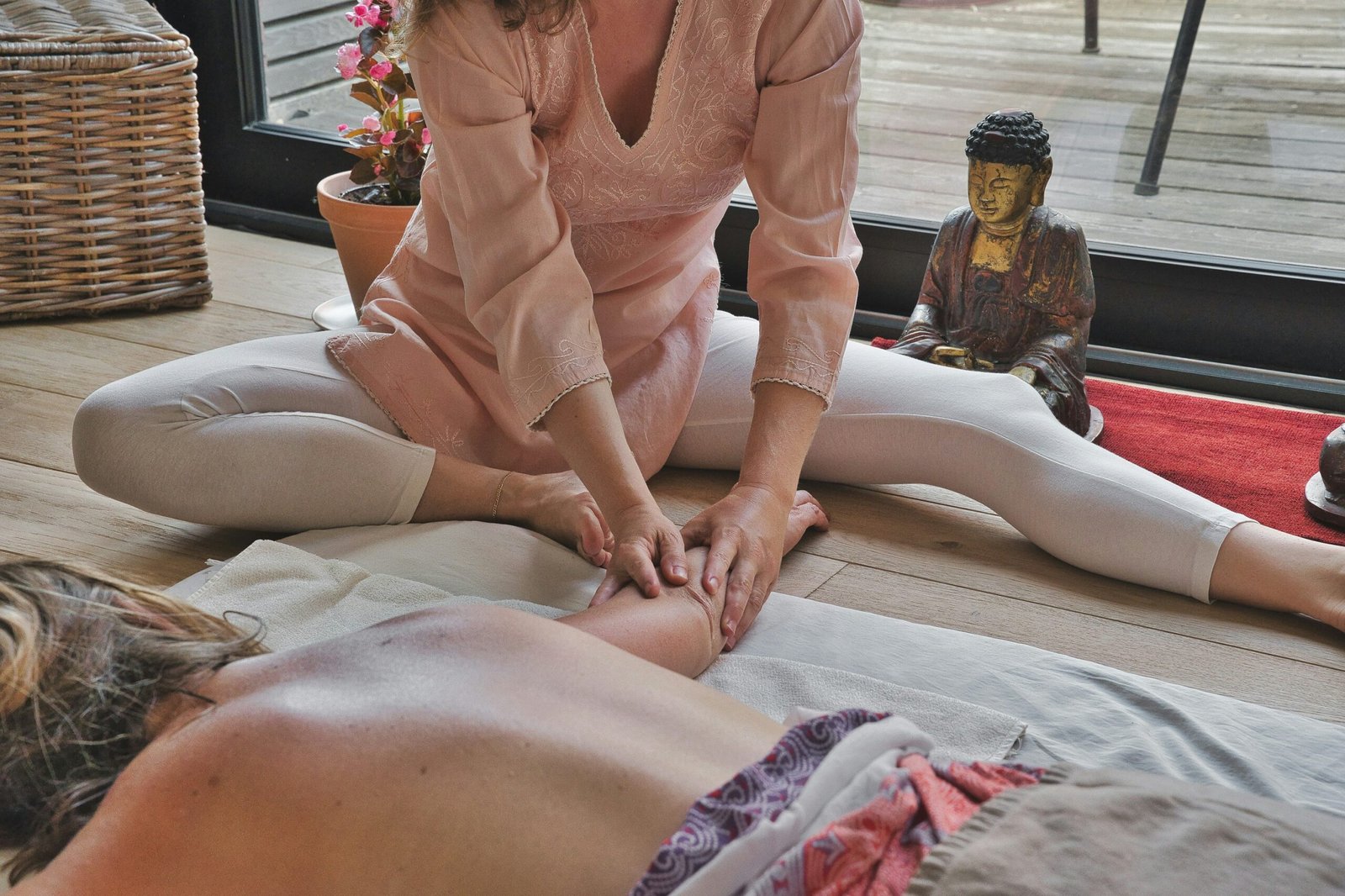Is it possible to take your endurance performance to new heights with just a few minutes of cold water immersion? This intriguing concept might sound surprising at first, but it’s known as cold plunge therapy, and it’s gaining traction among athletes and wellness enthusiasts alike. You might be wondering how immersing yourself in icy water could possibly boost endurance efficiency. The idea may seem counterintuitive, especially considering most of us equate warmth with comfort and cold with discomfort. However, the physiological effects of cold plunge therapy are worth exploring because they could lead to tangible benefits for your stamina and overall physical performance.
Understanding Cold Plunge Therapy
Cold plunge therapy, sometimes referred to as cold-water immersion, involves immersing your body in cold water for a short duration. This practice is more than a fleeting trend; it dates back to ancient times. People as far back as the Ancient Greeks and Romans have utilized hydrotherapy to promote health and well-being. Fast forward to today, and cold plunge therapy is being modernized and popularized through advancements in sports science and recovery techniques.
The Science Behind Cold Plunge Therapy
The physiological benefits of cold-water immersion are rooted in how your body responds to cold stimuli. When you immerse yourself in cold water, several processes are at play. Firstly, the cold causes your blood vessels to constrict, reducing blood flow to the skin and extremities. This process, known as vasoconstriction, helps redirect blood flow towards your core, and the after-effect is increased circulation once you emerge from the cold. Additionally, cold exposure can help reduce inflammation and muscle soreness after intense physical activity, facilitating faster recovery.
A Brief History of Hydrotherapy
Hydrotherapy has been used in various forms throughout history. From the natural hot springs of ancient cultures to the more controlled environments of modern spas and sports facilities, water therapy has evolved but always maintained its base principle—using water to promote physical and mental health. Despite its age-old origins, the benefits of cold therapy and how it relates specifically to endurance are now more relevant than ever, given our advanced understanding of physiology.
Benefits of Cold Plunge Therapy
To truly appreciate how cold plunge therapy can enhance your endurance, it’s essential to understand the broader benefits it offers. Not only does it promise improved stamina, but it also enhances recovery and mental acuity, which are crucial elements for peak performance.
Enhanced Recovery and Reduced Muscle Soreness
After a vigorous workout, your muscles experience small tears from the strain, leading to inflammation and soreness. Cold plunge therapy can be beneficial in this regard, as the cold reduces inflammation by constricting blood vessels. This minimization of swelling leads to decreased muscle soreness, allowing you to bounce back faster for your next training session. The sooner you feel ready to hit those tracks or trails again, the quicker you can get back to your endurance training routine.
Increased Circulation and Cardiovascular Efficiency
The shift in blood flow caused by cold immersion contributes to improved circulation efficiency. Once you exit the cold water, your blood vessels expand, pumping oxygen-rich blood throughout your body. This increased circulation not only aids in nutrient delivery but also boosts overall cardiovascular health. As your heart and blood vessels adapt to these changes, they become more efficient, improving your endurance capacity over time.
Boosted Mental Toughness
Endurance isn’t just a physical challenge—it’s a mental one too. Cold plunge therapy encourages you to embrace discomfort, which can significantly bolster your mental resilience. As you habituate to dipping into cold waters, you train your mind to focus and remain calm under pressure, a skill that’s utterly advantageous during long endurance events. Maintaining mental fortitude can be the deciding factor between pushing through or giving up in crucial moments.
Elevated Energy Levels and Mood
A quick cold plunge is not only invigorating but also a natural energy booster. Cold exposure triggers the release of endorphins, those feel-good hormones that can elevate your mood and increase energy levels. Starting your day with cold immersion may make you feel more alert, focused, and ready to tackle whatever challenges lie ahead. This boost is particularly useful for endurance athletes who require sustained energy and a positive mindset during prolonged physical activities.
How Cold Plunge Therapy Affects Endurance Efficiency
Now that you have a grasp of the general benefits, let’s delve deeper into how exactly cold plunge therapy translates these advantages into enhanced endurance efficiency. The mechanisms are both physiological and psychological, each playing a crucial role in improving your endurance capabilities.
Muscle Oxygenation and Efficiency
A pivotal factor in endurance performance is how well your muscles utilize oxygen during prolonged exercise. Cold plunge therapy can improve this efficiency by promoting vasodilation after the initial cold immersion. As your blood vessels expand, oxygenated blood flows more effectively to your muscles, ensuring they receive the nutrients needed for optimal performance. Over time, this improved muscle oxygenation can have a significant impact on your endurance stamina.
Enhanced Cellular Metabolism
Cold exposure activates certain pathways that boost your metabolic rate, allowing your body to utilize energy more effectively. This increase in metabolic activity, particularly in brown adipose tissue, can aid in endurance events by enabling you to sustain energy levels for a more extended period. An efficient metabolism means your body is better equipped to convert energy stores into fuel, a key element for endurance athletes.
Improved Lactate Threshold
Endurance performance is often limited by the accumulation of lactate in your muscles, which can lead to fatigue. Cold plunge therapy aids in improving your lactate threshold—the point at which lactate begins to accumulate faster than it can be removed. By enhancing your body’s ability to process lactate more efficiently, you can sustain peak performance for longer periods before fatigue sets in.
Adaptation to Stress
Engaging in cold plunge therapy forces your body to adapt to stress in a controlled setting. This repeated exposure teaches your body—and mind—to handle stress more efficiently, improving your ability to remain composed during physically demanding endurance events. The ability to manage physiological stress can prevent your performance from deteriorating, maintaining endurance efficiency when the going gets tough.
Practical Tips for Implementing Cold Plunge Therapy
With all these benefits in mind, you might be eager to start including cold plunge therapy into your routine. Here are some practical tips to help you get started safely and effectively, ensuring that you maximize the benefits while minimizing any potential risks.
Finding the Right Environment
Before taking the plunge, find a safe and controlled environment for your cold immersion. This could be a dedicated cold plunge pool at a gym or spa. Alternatively, many enthusiasts use their bathtubs or invest in inflatable plunge pools for home use. Whichever option you choose, make sure it allows for consistent temperature control and safety.
Setting Optimal Water Temperature
An ideal water temperature for cold plunge therapy ranges between 50 to 59 degrees Fahrenheit (10 to 15 degrees Celsius). At this temperature, you’ll achieve the benefits without overstressing your body. Always start with the warmer end of this spectrum, especially if you’re new to cold immersion, and gradually lower the temperature as you become acclimatized.
Establishing a Routine
Incorporate cold plunge therapy into your routine a few times a week, ideally after your workout sessions. Start with 1 to 3 minutes of immersion and slowly increase the duration as your tolerance builds and comfort improves, typically up to a maximum of 10 minutes. Consistency is key; regular practice will provide the most benefits.
Listening to Your Body
It’s crucial to listen to your body’s signals and never push beyond your limits. Shivering and discomfort are normal, but if you experience excessive pain, numbness, or any disorientation, it’s time to get out and warm up. Post-session, it’s vital to allow your body to gradually re-adjust to normal temperature to prevent any adverse effects.
Potential Risks and Precautions
As beneficial as cold plunge therapy is, it’s not without its risks, especially if not approached mindfully. Understanding these potential hazards can help you mitigate them effectively and enjoy a safe cold immersion experience.
Hypothermia
Extended exposure to cold can lead to hypothermia, a dangerous drop in core body temperature. To prevent this, adhere to recommended immersion durations and temperatures. Always remember that less is more when it comes to cold exposure; there’s no benefit gained from prolonging your time beyond what’s recommended.
Cardiovascular Concerns
Cold immersion results in immediate cardiovascular responses, including increased blood pressure and heart rate. Individuals with pre-existing cardiovascular conditions should consult with a healthcare professional before engaging in cold plunge therapy. Starting gradually with short durations and higher temperatures can help mitigate these concerns.
Skin Sensitivities
Some people may experience skin irritation or discomfort from prolonged cold exposure. If you have known skin sensitivities, monitor your skin’s reaction closely during and after sessions. Moisturizing your skin post-session can help mitigate any dryness or irritation caused by cold exposure.
Comparisons with Other Recovery Techniques
Cold plunge therapy is one of several recovery modalities available to help athletes enhance endurance efficiency. Comparing it with other methods can help determine its unique advantages and when combining multiple recovery techniques might be most beneficial.
Ice Baths vs. Cold Plunge Therapy
Ice baths are similar to cold plunge therapy but typically involve lower temperatures and the addition of ice. While both reduce inflammation and aid recovery, cold plunge therapy provides a more accessible and less intense experience, making it preferable for regular practice.
Contrast Water Therapy
Contrast bath therapy involves alternating between hot and cold water immersion, challenging your body’s adaptive responses. While it offers its own benefits, cold plunge therapy remains a simpler and more focused approach to leveraging cold exposure’s advantages, especially for endurance training.
Cryotherapy
Cryotherapy involves brief exposure to extreme cold temperatures using specialized chambers. It is a more advanced and costly option but can offer similar benefits in terms of recovery and endurance. However, for those seeking a more straightforward, low-cost alternative, cold plunge therapy remains a practical choice.

Integrating Cold Plunge Therapy with Endurance Training
Once you’re comfortable with cold plunge therapy, you may want to integrate it strategically with your endurance training for maximum benefit. Here are some ideas on how to incorporate it into your routine seamlessly.
Scheduling Around Intense Workouts
Consider scheduling your cold plunge therapy sessions after your most intense workouts. By doing so, you’ll benefit from the reduction in inflammation and muscle soreness, allowing for quicker recovery and less downtime between sessions.
Balancing Rest and Recovery
While cold plunge therapy can enhance recovery, it’s important to balance its use with other recovery practices, such as adequate rest, nutrition, and hydration. Cold immersion should complement your existing recovery regimen, not replace other essential elements.
Combining with Mental Training
Given the mental toughness benefits of cold plunge therapy, consider integrating mindfulness or meditation practices during your immersion sessions. This dual approach can enhance mental resilience, positively impacting your endurance performance.
Personalizing Your Cold Plunge Experience
As you gain experience with cold plunge therapy, you’ll develop preferences and strategies that best suit your individual needs. Personalizing your practice can amplify its benefits and make it a sustainable part of your training regimen.
Temperature Adjustments
Over time, you may choose to experiment with different water temperatures to find what works best for your body. Some individuals may prefer slightly warmer or cooler temperatures based on their tolerance and desired outcomes.
Session Length Customization
Tailoring the duration of your cold plunge sessions to align with your goals and comfort level is essential. Experienced individuals may choose longer immersions, while those still acclimating might prefer shorter durations.
Incorporating Visualization Techniques
As your mind adjusts to the cold, harness visualization techniques to focus on your endurance objectives. Imagine yourself accomplishing specific goals, whether running a marathon or completing a mountain bike trek. This mental practice can reinforce motivation and performance.

Conclusion
Cold plunge therapy offers a compelling approach to enhancing endurance efficiency by leveraging the power of cold exposure to boost recovery, mental toughness, and physiological efficiency. By understanding its mechanics and benefits, you can seamlessly integrate it into your training routine, ultimately transforming how you approach endurance challenges. Remember, every immersion is not just a test of physical resilience but an investment in your endurance future. As you embrace the chill, you’ll likely find that cold plunge therapy equips you with newfound strength, efficiency, and confidence to conquer your next adventure.




